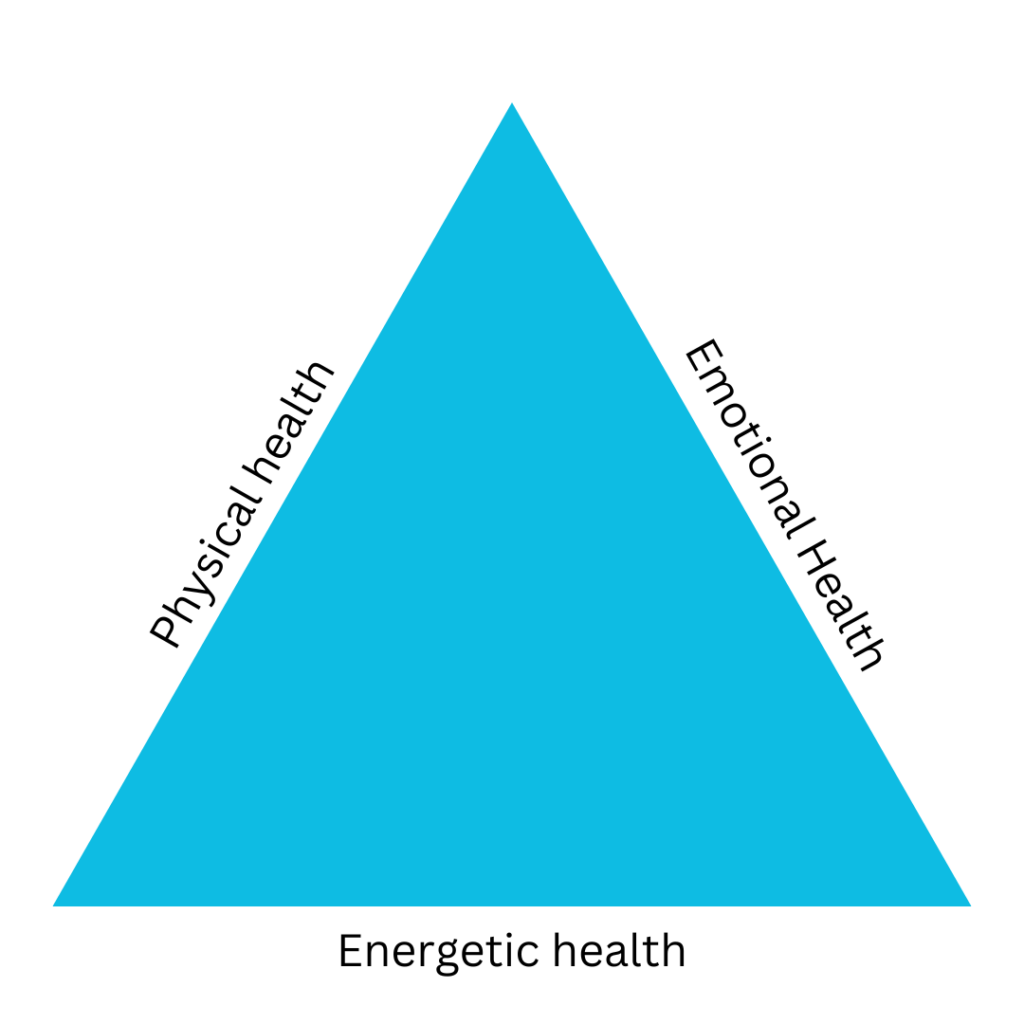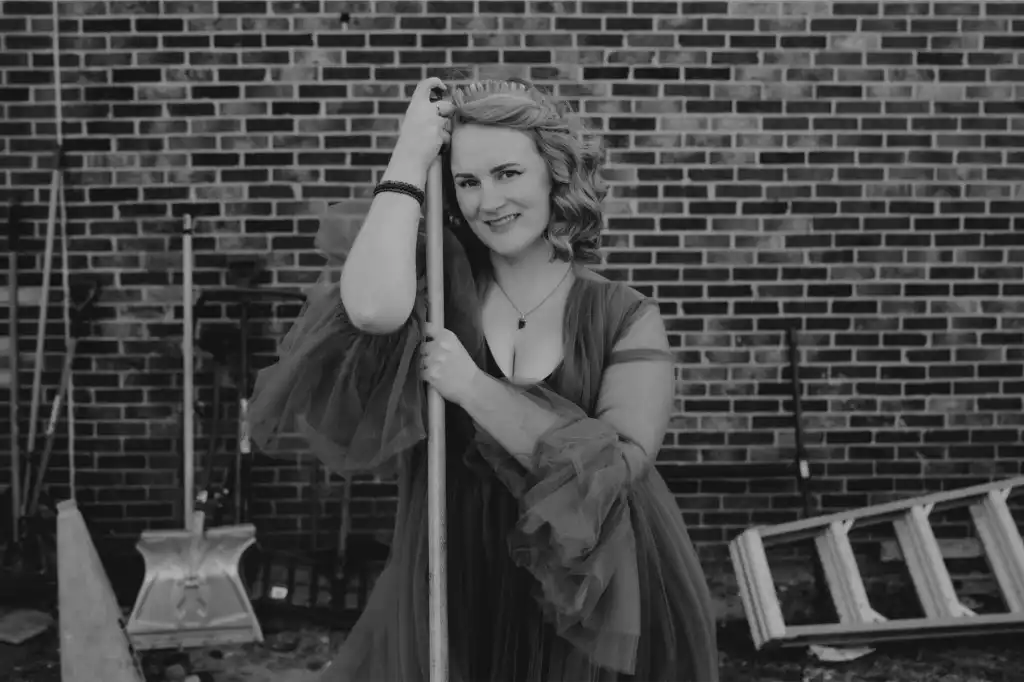Listen to the episode
What Is Reiki
Reiki is a practice that involves transferring positive energy from the practitioner’s hands to the recipient to promote relaxation and healing. It’s about tapping into the energy that flows through all living things and using it to restore balance and well-being.
What Is A Reiki Master
A Reiki Master has gone through all the Reiki training levels and attunement, and they have attuned someone else to the practice. I see the master level as someone who’s genuinely integrated Reiki into every aspect of their life.
I’m a Reiki Master, and I did not feel I was one even when I went through my final training and got my certificate. But that was the moment when I instinctively started reaching for Reiki. When I think about Reiki, it’s not as if I need to remember facts or figures or what my teachers told me; it’s so integrated into my life that I can speak to it through that lens.
How I Discovered Reiki
If you know much about me, I was a skeptic, so I thought Reiki was hocus pocus for the first 23 years of my life. If you had told 22-year-old Molly that she would be a Reiki Master and train others, I wouldn’t have believed you.
But around the age of 23, I developed an unexplainable chronic hip pain. I saw every medical specialist I could find, and none of them could tell me why I was in pain. None of them could give me any relief. One doctor even said to me that he hadn’t seen chronic pain like that outside of his 80-year-old patients.
And this pain was incredibly confusing because I was so ‘healthy’ at the time. And yet I was in pain every single day, and around 2016, I just succumbed to the fact that no matter what I do, I’m just going to be in pain.
At this time, I started to notice this interesting trend, where when I had a difficult case at work (I was an advocate for survivors of sexual violence) and I felt distraught from the stories I was hearing, my pain became worse. And so I started to associate my pain with kicking me when I was down.
In 2016, I went on a yoga retreat. The teacher I met there had a very similar career to mine when she was around my age. She had similar pain to mine and found relief through Reiki, and I was willing to try anything at this point. So, I booked a Reiki session for myself and felt relaxed afterwards.
In this first session, I remember the practitioner had one hand on my ankle and one hand on my knee, and with my eyes closed, I remember seeing this wispy white light in the shape of my hip come out of my body, rotate and snap back into place. I remember having this gut feeling that this was my path to healing. Sure enough, I went to my chiropractor’s office a week later, and he was shocked. He began questioning what I did to make my hips be in alignment for the first time.
And that sent me down the rabbit hole of trying to understand this whole Reiki thing.
Triangle of Healing
Since becoming a Reiki Master, I’ve created a framework called Triangle of Healing that helps you visualize your health. All three points are connected, which means they affect each other and are affected by each other.

This framework means that when someone uses Reiki to heal pain, it keeps coming back because it’s also affecting their physical and emotional health. So, when we pull all three sides of the Triangle of Healing together, deep, long-term healing occurs. And often, I find that the energetic health piece is the missing link.
What happens physiologically when you receive Reiki
Everything in our universe comprises tiny particles that vibrate at different speeds and frequencies. You’re made of them, and the space between us and the device you’re reading this on is made of tiny particles that are mostly energy.
What happens is these different frequencies start to affect one another. For example, sometimes, when you walk into a room, you can sense that someone just ended an argument in that room, and you can cut the tension with a knife. So when you walk into that space, you don’t have to be told that an argument happened; you can feel it on a cellular level, and something feels off. Similarly, if you walk into a space that people are celebrating in, even if you’re not present for that celebration, you can feel yourself lift when you walk into that room.
It’s because of that vibration that those frequencies are left behind. These frequencies affect us on a cellular level. When our cells are vibrating faster, we’re at a higher frequency. This is when we experience our best health, feel our best, and have the most energy. When we are vibrating at a lower frequency, our cells vibrate slower. That’s when we don’t feel great, get sluggish, and might feel sick or achy.
Our physical and emotional health is affected by our cells vibrating faster or slower. These vibrations play off of each other. So when a higher frequency interacts with a lower frequency, the lower one rises to be higher.
Reiki is a potent high frequency, so when the high-frequency particles come into your area, your body, whether it’s by hands-on or hands near your body or even at a distance, it causes your frequency on a cellular level to rise to meet it. Therefore, Reiki makes us feel more at ease, relaxed, and energetic.
This energy travels through your whole body regardless of where the practitioners are placing their hands, and it runs through a part of your body called your myofascial system, your fascia.

How your Fascia Links To Reiki
Your facial network is a tangible organ in your body. We used to believe that your skin was the largest organ in your body. Now, scientists believe that your fascia might be the largest organ in your body.
This white, stringy connective tissue covers your entire body, from your head to your fingertips to your toes, in one long sheet.
One of its jobs is to hold all your stuff together and keep everything connected. However, its other primary job is to send messages and communicate information from your body to your brain and back. Your fascia is how energy moves through your system.
Scientists believe we can measure this energy in biophotons, which translates to biological light. They believe the smallest sparks of consciousness move through our entire body, through the fascia. Because of these biophotons moving through your fascia, your brain connects with the rest of your body, your nervous system communicates with the rest of your body, and everything in your body works together as one unit.
Whether we look at this from a biological or energetic perspective, electricity moves through this connective tissue every moment of every day in your body. This is why if a Reiki practitioner has their hands on your head, you might feel a little tingle in your feet. As this energy enters your system, it moves along the fascia and goes where it needs to go.
Reiki on your Nervous System
The other thing you need to know about fascia is its connection to your nervous system. Your nervous system has two sides to it:
- Sympathetic nervous system: This is your fight, flight, or freeze response. It is also your stress response, your survival response.
- Parasympathetic nervous system: This is your rest, restore, and heal response or your relaxation response.
So your nervous system does not know the difference between a sabre-tooth tiger chasing you and your Wi-Fi buffering for just a bit too long before an important meeting. It responds the same way and goes into this survival response, where all of your energy and resources in the mind and body go towards keeping you alive. This means your digestion slows, your breath goes up into your chest, your memory, concentration and focus are impaired, and your pain receptors are affected. So, we feel more pain, tension, and inflammation in the body.
If you were to run away from this tiger, you wouldn’t take deep breaths. You would be up in your chest, panting. Your nervous system thinks you are running from a sabre-tooth tiger, so all of this tension builds in the body, particularly the muscles needed to prepare you to run.
For instance, when I was dealing with my hip pain, one of the things that we couldn’t figure out was I had this muscle on my butt that was in full Hulk smash mode. It was so tense that it pulled all the tissues from my upper back and the back of my calves into it. And that was creating a lot of pain in my hip. But now, since learning about the nervous system, I can see what was happening to me.
Your nervous system and long-term impact
The nervous system is so interesting because if you’re in that survival mode for the long term, it can have a domino effect on your physical and emotional health. So, we might get anxious or have chronic pain, or our immune system may become suppressed. A whole host of ailments come with this long-term activation of this sympathetic nervous system response. In reality, it was designed for that short burst, like, there’s a tiger! Gotta go.
But so much of our modern lives keeps us in that sympathetic nervous system response, and our brain thinks we’re being chased by tigers all day long. Therefore, our body responds in the same way. That’s why so many of us deal with stress-related issues.
So, the first is the effect on your physical body, the fascia. Your fascia stores information and memory as energy. If we think about how all the muscles in your body are built a lot like your bicep, so if I did 100 bicep curls every single day, my fascia and my muscles and even my bones would grow in a way that makes it easier for me to do bicep curls. That’s how our body works – it wants to make your life easier.
When we think about anxiety, when you feel anxious, what is the response in your physical body? Your chest gets tight. Your stomach gets tight. Your breath gets shallow. If you have that response over and over and over, the fascia, the muscles, and the bones in your body start to grow in a way that makes that squeeze, that constriction of your anxiety more manageable. Even if the emotional trigger of your anxiety goes away, your body and your fascia still remember it.
So, we can trigger anxiety through an emotional lens, or we can trigger it through a physical body sensation because your body might constrict for another reason. Maybe you’re cold, your muscles constrict, and you’re suddenly anxious. And so it’s essential to understand when we come back to the triangle of healing that your anxiety is not just in the emotional health; it’s also creating an effect on the tissues of your physical health. It’s storing that emotion and energy again because your brain wants to keep you alive.

How Reiki helps in the short-term
When you get a Reiki session, you receive a high frequency that helps you switch from the sympathetic to the parasympathetic nervous system, from survival to relaxation, creating this energy disbursement.
Now, that energy which was going towards survival goes towards finding balance and equilibrium again. It starts to undo some of that domino effect. We breathe deeper, and our heart rate slows. And we’re able to concentrate, focus, connect with other people, and feel creative and joyful. All of that starts to come back online when we shift out of this survival mode once we receive Reiki. Otherwise, it will store up inside of you until you burst, get pent-up pain, or lash out.
How Reiki helps in the long-term
Reiki is excellent at increasing our resilience to stress. So when we are driving to work, and somebody cuts us off, we don’t freak out as our first instinct and go into a sympathetic response, creating this domino effect.
We have more space to see that we’re okay, there isn’t a tiger, and nobody got hurt. We can take a couple of deep breaths and continue driving.
Imagine how different your day would be if you had those two different responses: the one where you freak out and go to a sympathetic response, drive like you’re in a NASCAR race, get to work, and your whole day is set up on this pedestal of stress versus the one where you’re calm, get to breathe through the situation, and move on.
Reiki is powerful because it can be a quick fix when we’re stressed and in that survival response. But learning how to do Reiki for yourself is even MORE powerful because then you can create resiliency and spaciousness so that every little thing doesn’t become a sabre-tooth tiger. You have more breathing room to respond rather than react out of habit and out of survival.
How Reiki works with your Chakras
As mentioned before, fascia runs through our entire body, but there are seven places with more fascia than anywhere else (more fascia means more electricity, energy, and biophotons). Those seven locations directly align with your endocrine glands, which secrete hormones for stress or relaxation. These seven locations also align with the seven major chakras on your spine.
If you’re not familiar with Chakras, they are energy centers on the body that correspond with physical and emotional health.
One of the Chakras is your root chakra, this is the foundation of the system. It’s the first one located at the spine’s base. It’s connected with this energy of safety, security, and belonging, so an imbalance in this root energy might appear as fear.
For example, in my early 20s, I lived in fear. I started working with survivors when I was 17, so my entire adult life was shaped by these stories of people in the most horrifying situations ever. I did not see the world as a safe place. When I thought about my life as an adult, I felt afraid to spend time with people I know and trust because what if I’m going to get hurt? That was just the way that I saw the world.
So I lived in this constant state of fear, and because of that, I had this muscle on my butt that was full Hulk mode. That pain in my hip radiated down my legs. When we experience fear, one of our brain’s responses to keep us alive is it starts to send less oxygen to the lower back, which affects the sciatic nerve and creates sciatic pain. Your root chakra is located where your sciatic nerve is and governs the area of your body from the base of your spine down to your feet.
Because I was living in this state of fear, my root chakra was so out of balance that no amount of therapy, no amount of physical therapy, could bring me back to neutral. I was constantly going through this cycle of pain, and no wonder when I had days on the job that were harder, I was in more pain because my body was responding to this fear.
Here’s the thing, that was how I viewed the world. I didn’t know I was in fear. I had no idea. I wasn’t consciously aware of it because I thought this was normal. This is how everyone views the world. But my body was storing that fear as energy. And it wasn’t until I started using Reiki to heal that fear response that I began to find relief.
I believe that understanding that fear was the root cause of that pain was what allowed me to start to heal it. Because if I never made that connection, I probably would still be living in pain today. That was the missing link that tied my physical pain with what I was experiencing in my job and, ultimately, is what helped me put the pieces together and heal.
Summary
Once we understand that your Triangle of Healing has three sides, we cannot focus on one part alone.
- Energetic health
- Physical health
- Emotional health
It’s that missing link that goes, oh, that’s what it is. The light bulb that empowers you to see that you can heal. You can combine these pieces and rewire your beliefs, fascia, and everything else. This means your body can feel safer and return to balance and equilibrium, and you can find long-term relief.
Find out more about my training, Reiki 1: The Science of Self-Healing.
September 25, 2024